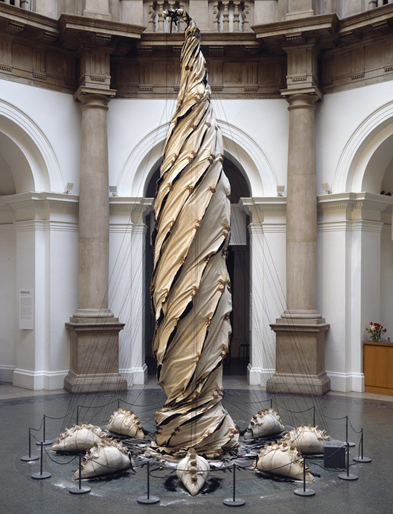Like the Puritans, who wanted to abolish Christmas, contemporary artists seem to have an inherent dis-trust of festivities. Educated, as so many of them are, to believe that it is their job to see through the shams and self-deceptions of society (to interrogate and deconstruct the ruling paradigms of contemporary discourse), they may feel almost duty bound to disapprove of Yuletide revelry. Christmas is not to be celebrated, in art, but anatomised - to be exposed as a delusory device for promoting consumer spending and thus furthering the interests of corporate capitalism; or to be "critiqued" (a term much favoured in art school seminaries today) according to some other, equally Scrooge-like Marxist-deconstructivist pattern of received ideas. This probably explains why the Tate Gallery's sweetly optimistic policy of inviting a different contemporary artist each year to decorate the gallery Christmas tree has produced such mixed results.
Each Christmas during the past nine years, various artists have brought varying degrees of energy to this commission; and on each occasion the Tate's press office has exhibited great (perhaps even heroic) ingenuity in describing and justifying the results - producing in the process one or two genuinely remarkable passages of prose. In 1989, for instance, Tim Head's dystopian Christmas tree was memorably described thus:
"Since the early 1980s Head's work has explored the relation of the natural and the man-made and this is reflected in his Christmas tree installation . . . Although a magpie appears to perch on top of the tree, the bird is dead and is being used as an ornament. This leads us to the awareness that the tree is also dead, having been felled and moved to an alien environment . . . In this way Head's presentation of a traditional symbol of Christmas comments on the...

Hang the Christmas tree
24-12-1996

